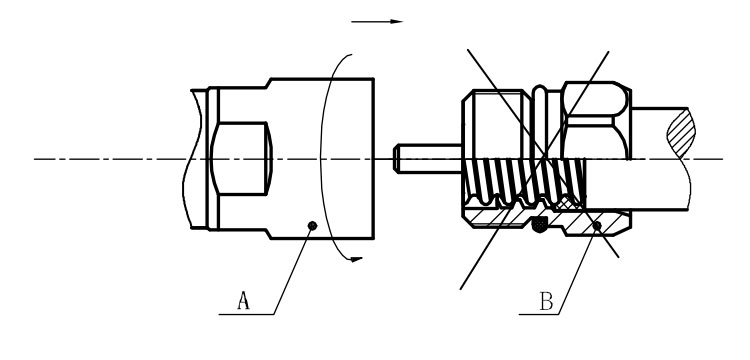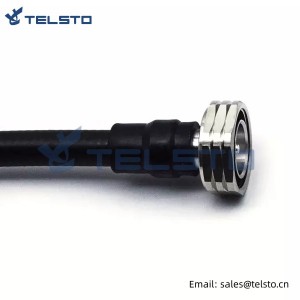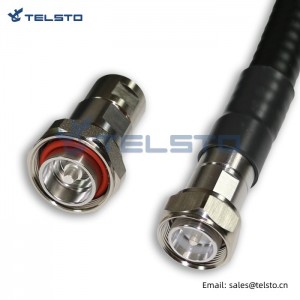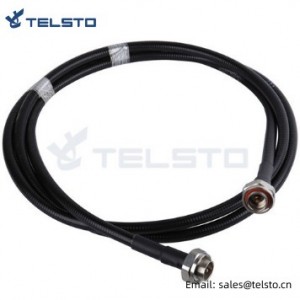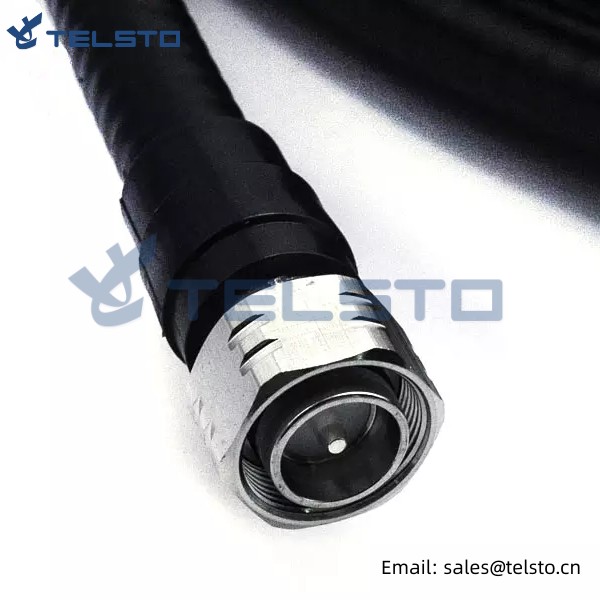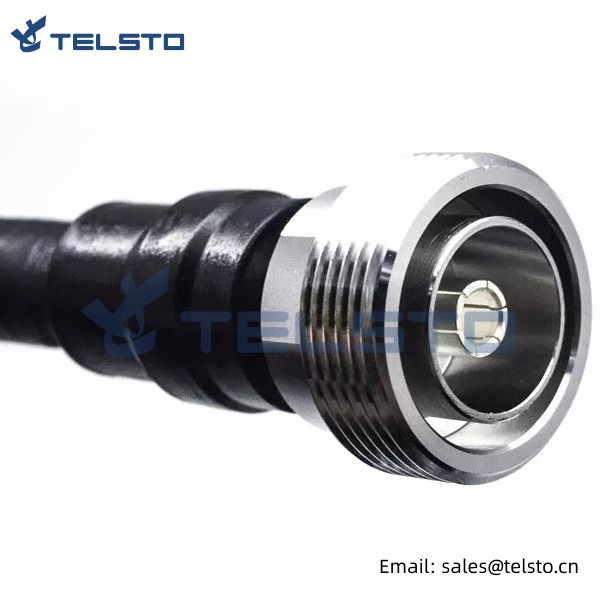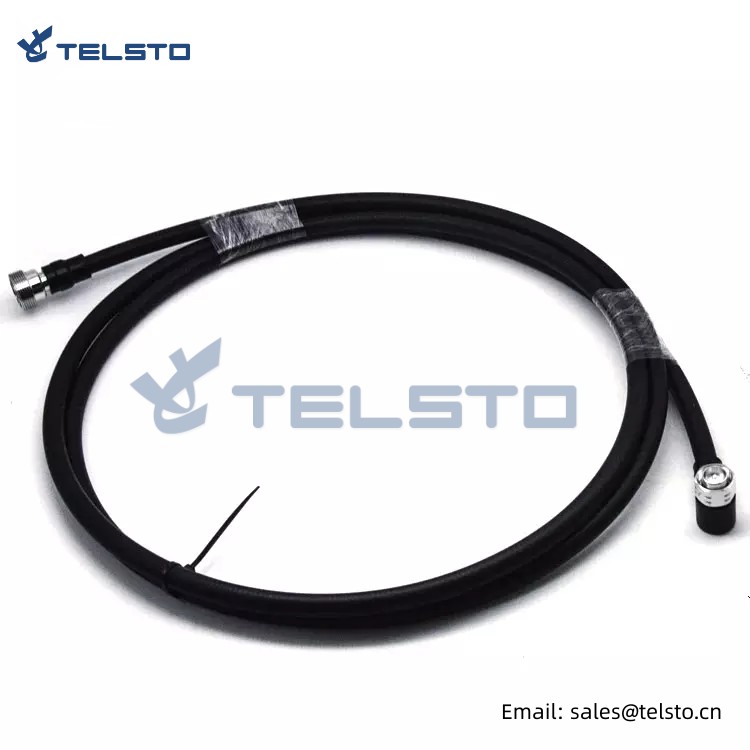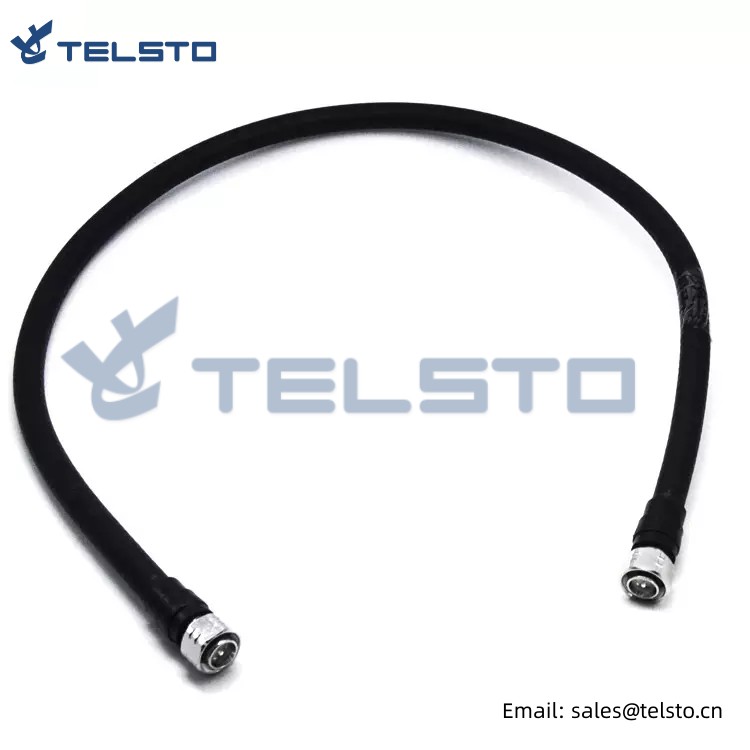2 meter Jumper cable 1/2″ super flex with 7/16 Male DIN Connector
1 RF coaxial connector:
1.1 Material and Plating
Inner conductor: brass, plated with silver, Plating thickness: ≥0.003mm
Insulation dielectric: PTFE
Outer conductor: brass, plated with ternary alloy, Plating thickness≥0.002mm
1.2 Electrical & Mechanic Feature
Characteristics impedance: 50Ω
Frequency range: DC-3GHz
Dielectric strength: ≥2500V
Contact resistance: inner conductor≤1.0mΩ, Outer conductor≤0.4mΩ
Insulator resistance: ≥5000MΩ (500V DC)
VSWR: ≤1.15 (DC-3GHz)
PIM: ≤-155dBc@2x43dBm
Connector durability: ≥500 cycles
2 RF coaxial cable: 1/2" Super Flexible RF Cable
2.1 Material
Inner conductor: aluminum wire covered with copper (φ3.60mm)
Insulation dielectric: polyethylene foam (φ8.90mm)
Outer conductor: corrugated copper tube (φ12.20mm)
Cable jacket: PE (φ13.60mm)
2.2 Feature
Characteristics impedance: 50Ω
Standard capacitor: 80pF/m
Transmission rate: 83%
Min. single bending radius: 50mm
Tensile strength: 700N
Insulation resistance: ≥5000MΩ
Shielding attenuation: ≥120dB
VSWR: ≤1.15 (0.01-3GHz)
3 Jumper cable
3.1 Cable Component Size:
Total length of cable assemblies:
1000mm±10
2000mm±20
3000mm±25
5000mm±40
3.2 Electrical feature
Frequency Band: 800-2700MHz
Characteristics Impedance: 50Ω±2
Operating Voltage: 1500V
VSWR: ≤1.11 (0.8-2.2GHz), ≤1.18 (2.2-2.7GHz)
Insulation voltage: ≥2500V
Insulation resistance: ≥5000MΩ (500V DC)
PIM3: ≤-150dBc@2x20W
Insertion Loss:
| Frequency |
1m |
2m |
3m |
5m |
| 890-960MHz |
≤0.15dB |
≤0.26dB |
≤0.36dB |
≤0.54dB |
| 1710-1880MHz |
≤0.20dB |
≤0.36dB |
≤0.52dB |
≤0.80dB |
| 1920-2200MHz |
≤0.26dB |
≤0.42dB |
≤0.58dB |
≤0.92dB |
| 2500-2690MHz |
≤0.30dB |
≤0.50dB |
≤0.70dB |
≤1.02dB |
| 5800-5900MHz |
≤0.32dB |
≤0.64dB |
≤0.96dB |
≤1.6dB |
Mechanical Shock Test Method: MIL-STD-202, Method 213, Test Condition I
Moisture Resistance Test Method: MIL-STD-202F, Method 106F
Thermal Shock Test Method: MIL-STD-202F, Method 107G, Test Condition A-1
3.3. Environment feature
Waterproof: IP68
Operation temperature range: -40°C to +85°C
Storage temperature range: -70°C to +85°C
Packing Reference
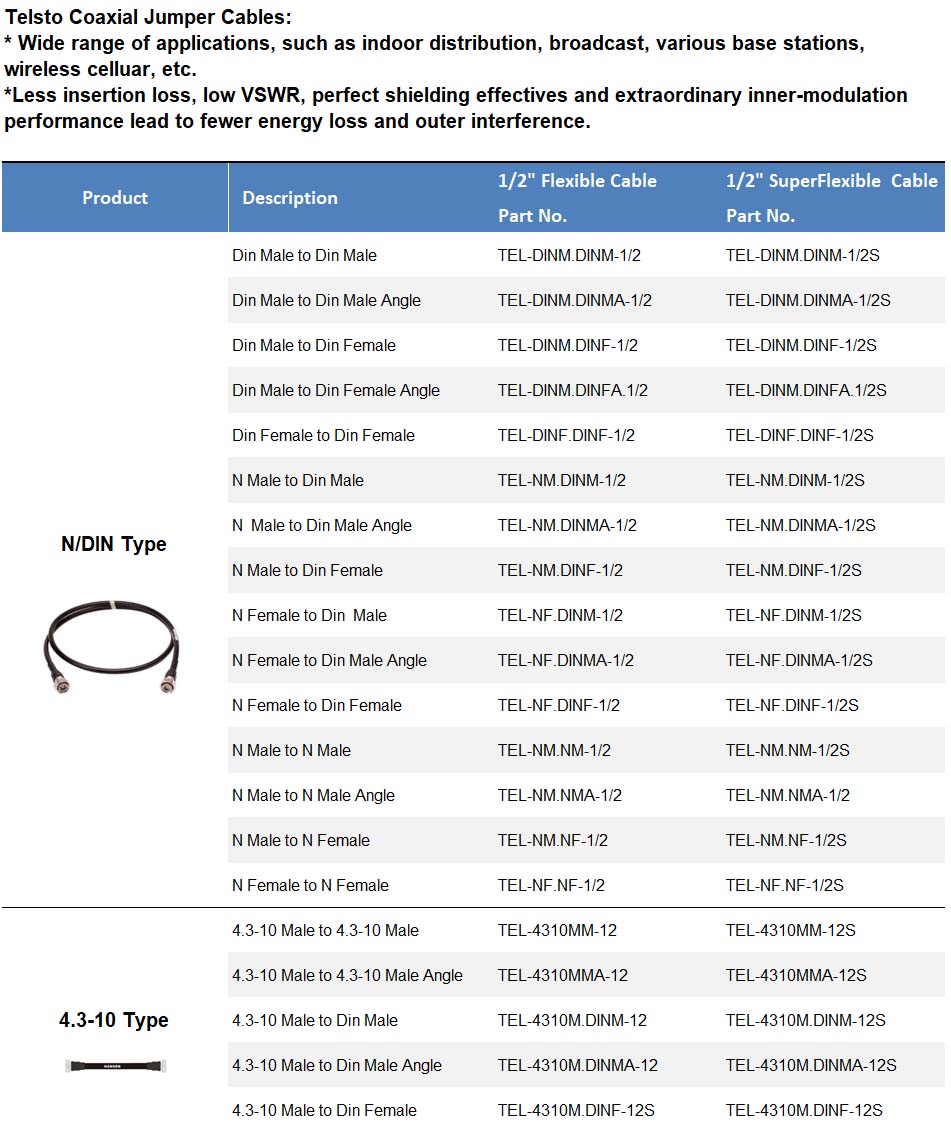
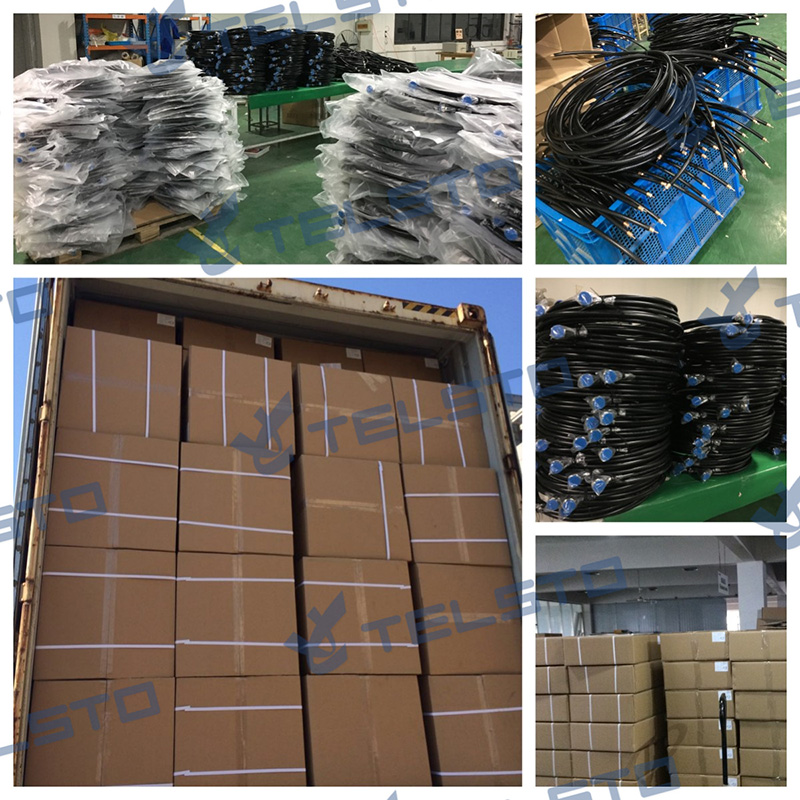
Installation Instructions of N or 7 / 16 or 4310 1 / 2″ super flexible cable
Structure of connector: ( Fig1 )
A. front nut
B. back nut
C. gasket
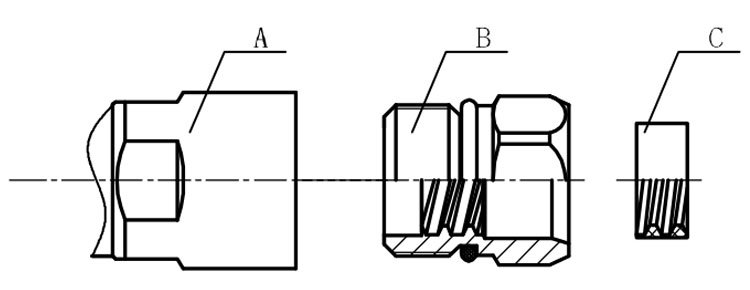
Stripping dimensions is as shown by diagram ( Fig2 ), attention should be paid while stripping:
1. The end surface of inner conductor should be chamfered.
2. Remove impurities such as copper scale and burr on the end surface of the cable.
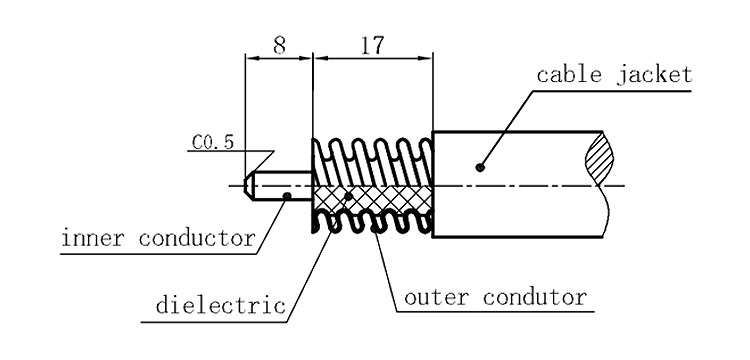
Assembling the sealing part: Screw the sealing part in along the outer conductor of the cable as shown by the diagram ( Fig3).
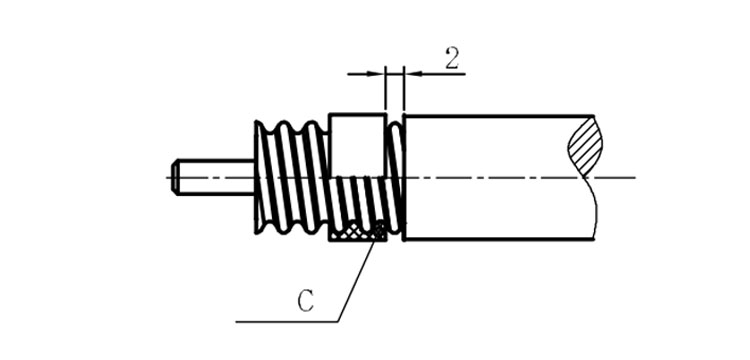
Assembling the back nut (Fig3).
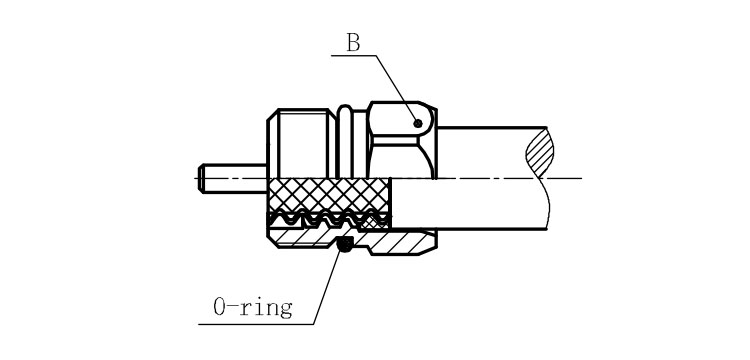
Combine the front and back nut by screwing as shown by diagram ( Figs( 5)
1. Before screwing, smear a layer of lubricating grease on the o-ring.
2. Keep the back nut and the cable motionless, Screw on main shell body on back shell body. Screw down main shell body of back shell body using monkey wrench. Assembling is finished.
